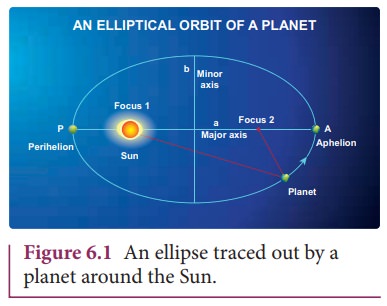Chapter: 11th Physics : UNIT 6 : Gravitation
Gravitation
INTRODUCTION
We are amazed looking at the glittering sky; we wonder how the Sun rises in the East and sets in the West, why there are comets or why stars twinkle. The sky has been an object of curiosity for human beings from time immemorial. We have always wondered about the motion of stars, the Moon, and the planets. From Aristotle to Stephen Hawking, great minds have tried to understand the movement of celestial objects in space and what causes their motion.
The ŌĆśTheory of GravitationŌĆÖ was developed by Newton in the late 17th century to explain the motion of celestial objects and terrestrial objects and answer most of the queries raised. In spite of the study of gravitation and its effect on celestial objects, spanning last three centuries, ŌĆ£gravitationŌĆØ is still one of the active areas of research in physics today. In 2017, the Nobel Prize in Physics was given for the detection of ŌĆśGravitational wavesŌĆÖ which was theoretically predicted by Albert Einstein in the year 1915. Understanding planetary motion, the formation of stars and galaxies, and recently massive objects like black holes and their life cycle have remained the focus of study for the past few centuries in physics.
Geocentric Model of Solar System
In the second century, Claudius Ptolemy, a famous Greco-Roman astronomer, developed a theory to explain the motion of celestial objects like the Sun, the Moon, Mars, Jupiter etc. This theory was called the geocentric model. According to the geocentric model, the Earth is at the center of the universe and all celestial objects including the Sun, the Moon, and other planets orbit the Earth. PtolemyŌĆÖs model closely matched with the observations of the sky with our naked eye. But later, astronomers found that even though PtolemyŌĆÖs model successfully explained the motion of the Sun and the Moon up to a certain level, the motion of Mars and Jupiter could not be explained effectively.
Heliocentric Model of Nicholas Copernicus
In the 15th century, a Polish astronomer, Nicholas Copernicus (1473-1543) proposed a new model called the ŌĆśHeliocentric modelŌĆÖ in which the Sun was considered to be at the center of the solar system and all planets including the Earth orbited the Sun in circular orbits. This model successfully explained the motion of all celestial objects.
Around the same time, Galileo, a famous Italian physicist discovered that all objects close to Earth were accelerated towards the Earth at the same rate. Meanwhile, a noble man called Tycho Brahe (1546-1601) spent his entire lifetime in recording the observations of the stellar and planetary positions with his naked eye. The data that he compiled were analyzed later by his assistant Johannes Kepler (1571ŌĆō1630) and eventually the analysis led to the deduction of the laws of the planetary motion. These laws are termed as ŌĆśKeplerŌĆÖs laws of planetary motionŌĆÖ.

Related Topics